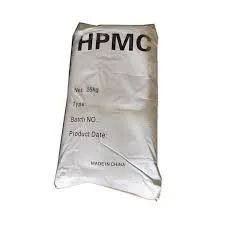
Dek . 14, 2024 12:58 Back to list
Exploring the Applications and Properties of Methyl Hydroxyethyl Cellulose in Various Industries
Methyl Hydroxyethyl Cellulose A Versatile Polymer with Diverse Applications
Methyl hydroxyethyl cellulose (MHEC) is a non-ionic cellulose ether that has gained significant attention in various industries due to its unique properties and versatility. As a derivative of cellulose, a naturally occurring polymer, MHEC has been modified to enhance its solubility and functionality, making it a valuable ingredient in a range of applications. This article explores the properties, manufacturing process, and applications of MHEC, highlighting its importance in modern technology and industry.
Properties of Methyl Hydroxyethyl Cellulose
One of the most notable properties of MHEC is its ability to dissolve in water, forming a clear and viscous solution. This is largely due to the hydroxyethyl groups attached to the cellulose chain, which facilitate water interaction and increase solubility. MHEC is characterized by its thickening, gelling, and film-forming capabilities, making it an excellent choice for a variety of formulations. Furthermore, MHEC is temperature-stable and exhibits pH stability, allowing it to maintain its properties across a wide range of environments.
Additionally, MHEC has been found to possess excellent adhesive properties and can improve the texture and spreadability of products. These characteristics make it an essential ingredient in many applications, especially in the construction and cosmetics industries, where consistency and performance are crucial.
Manufacturing Process
The production of MHEC typically begins with the extraction of cellulose from natural sources such as wood or cotton. The cellulose is then subjected to chemical modification through a process of etherification, during which methyl and hydroxyethyl groups are introduced to the cellulose backbone. This modification alters the physical and chemical properties of cellulose, resulting in MHEC.
The manufacturing process also involves careful control of factors like temperature, pH, and reaction time, ensuring that the final product meets specific quality standards. The resulting MHEC is then dried, milled, and packaged for distribution. Manufacturers often produce MHEC in various grades to cater to specific requirements in different applications.
methylhydroxyethyl cellulose

Applications of Methyl Hydroxyethyl Cellulose
Methyl hydroxyethyl cellulose has a wide range of applications across multiple industries. In the construction sector, MHEC is a key ingredient in tile adhesives, dry mortars, and other construction materials. Its water-retention properties help to improve the workability of the materials and enhance adhesion, ensuring durability and longevity.
In the food industry, MHEC serves as a thickening agent, stabilizer, and emulsifier. It helps maintain texture and consistency in various food products, such as sauces, dressings, and dairy items, contributing to an improved eating experience for consumers.
The cosmetic and personal care industry also benefits from MHEC's unique properties. It is commonly used in skincare products, shampoos, and conditioners, where it acts as a thickener and film-forming agent, providing a luxurious texture and enhancing the product's performance.
Furthermore, MHEC is finding increasing use in pharmaceuticals as a binding agent in tablet formulations and as a protective coating for drug delivery systems. Its biocompatibility and non-toxic nature make it an attractive option for pharmaceutical applications.
Conclusion
Methyl hydroxyethyl cellulose is a multipurpose polymer that plays a vital role in various industries, from construction and food to cosmetics and pharmaceuticals. Its unique properties, combined with its versatility, make it an indispensable ingredient in many formulations. As industries continue to evolve, MHEC's applications are likely to expand, highlighting its importance in modern technology and product development.
-
Versatile Hpmc Uses in Different Industries
NewsJun.19,2025
-
Redispersible Powder's Role in Enhancing Durability of Construction Products
NewsJun.19,2025
-
Hydroxyethyl Cellulose Applications Driving Green Industrial Processes
NewsJun.19,2025
-
Exploring Different Redispersible Polymer Powder
NewsJun.19,2025
-
Choosing the Right Mortar Bonding Agent
NewsJun.19,2025
-
Applications and Significance of China Hpmc in Modern Industries
NewsJun.19,2025







